:: What Make A Good Environment? ::
Before I decide what kind of environment, I want to create I need to understand what makes a good game area. There won’t need to be consideration for things like gameplay mechanics with this as it will be purely for the purposes of creating a 3D visual. Even so, I will need to source tips and methodology behind what I should focus on in whatever scene I decide to make.
‘A game environment needs to have as many objects as possible to make it look like a realistic setting(…) The determining factor for how much an artist must populate a game environment is the effect they want to achieve. If it has to be noisy, then make it noisy. But this has to be done intentionally, not without order.’
Jordan, J (2021)
The above quote (Jordan, J. 2021) talks about things professional environment artists consider when create a realistic environment, which is the style I intend to create in my own work. Specifically, it discusses asset placement, and understanding the sheer number of assets required for scene. For example, in the one ‘environment’ I have made previously I didn’t populate the space with nearly enough asset to make the area seem lived in. But at the same time if the environment I create is a spartan scene then you don’t want to add clutter just for the sake of clutter.
In order to help understand what practises I should implement I looked back to my previous environment work, created during the ‘Team Project’ module in my first year of university study. There are many problems with this environment. From the lack of assets making the space feel empty, to more technical faults like the wooden beams not looking as intended and some of the texturing being low resolution. Likely caused from a bad UV layout.

In addition, there are issues with assets not looking as though they belong, for example the sliding ladder is far too chunky for what is otherwise a fairly ornate scene. Plus, with the heavy use of wood grain the scene becomes largely a sea of brown with not many highlights to focus the eye.
The lighting is also very flat and makes the seen appear uninteresting. For an abandoned stuffy environment like an old library, I could have also made use of visual effect to add dust particles to give that sealed off feeling. Finally, without using things like cobwebs, or natural vines to show the forgotten state of the scene the environment comes across as dirty more than abandoned.
Addressing these faults is something that will be key to creating a high-quality environment piece. It’s also important I look at telling a story with my environment. Environment artists in large part are visual storytellers so it is vital that when creating a full scale environment I tell a story that is both compelling and not taking anything away from the overall visual of the scene.
:: Interesting Environment Ideas ::
Next, I need to decide what kind of environment I want to produce for my portfolio. To do this I looked to other junior environment artists portfolios on artstation, giving me an idea of the standard of work I am going to need to produce to be competitive in the industry. In addition to helping generate ideas for environments that interest me.
:: Example 1 ::
I found the portfolio of Silke Van Der Smissen, a junior environment artist as Guerrilla Games. While many of her works are stylized there are two realistic environment present which I love. The first, titled ‘Lost and Found’ shows a abandoned house in what appears to be a post-apocalyptic world. I find the use of limited assets here fascinating and believe an environment like this one would allow me to experiment a lot with texturing and material creation.
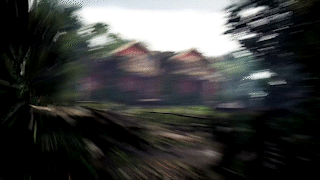
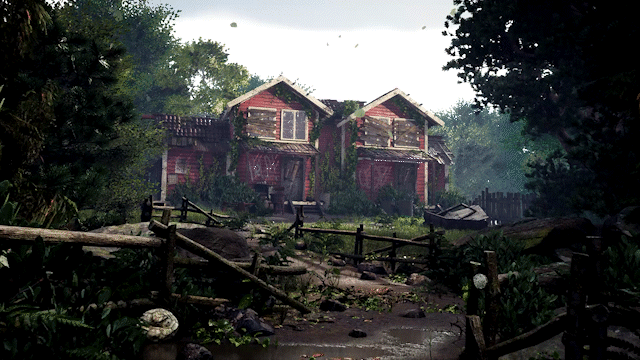
The postproduction elements such as the slow zoom of the camera and the falling leaves really help add to the atmosphere. Which is something I aim to implement into my own work; this will also help me further learn how to use unreal engine as an artist. However, I do find the post-apocalyptic setting a little dull, and on a personal note I find graffiti such as ‘help’ being sprayed onto buildings to be a uninspired method of visual storytelling.
:: Example 2 ::
Another example by Silke Van Der Smissen, this time an interior environment. I love the use of lighting in this scene, which really makes the room feel stuffy, and the interesting shadow cast by the circular window frame. There are post production elements here again, such as the dust particles to add to that cramped feeling and the texturing is on another level to my own work currently.
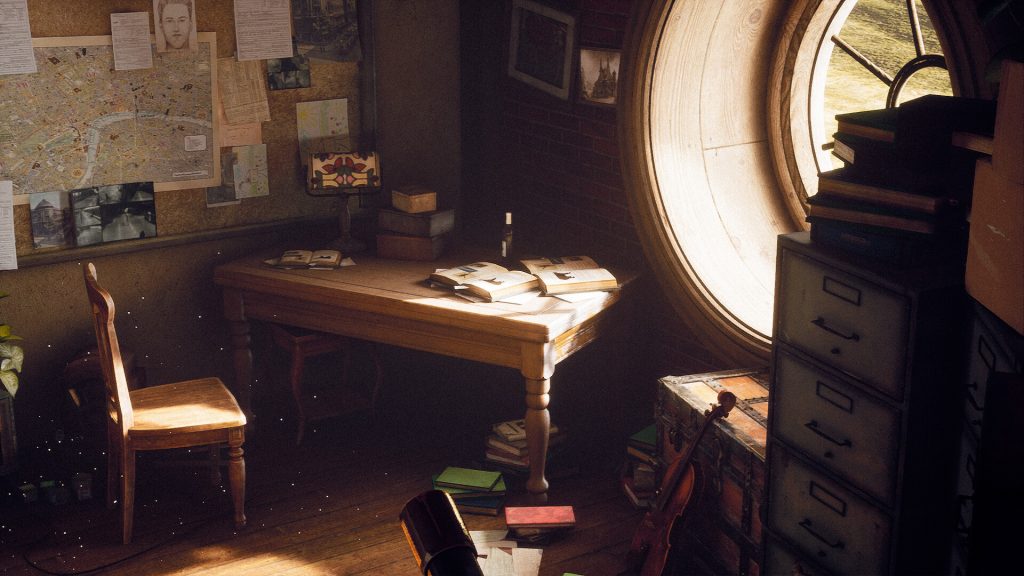
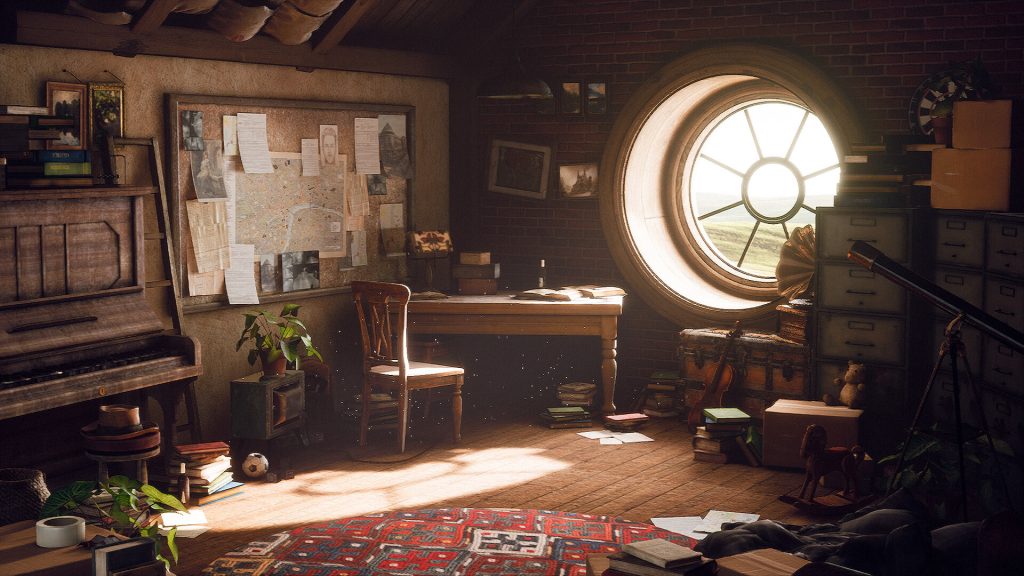
This environment really shows what Justine Jordan was discussing in their article ‘How to Design Better Video Game Environment Art’ (Jordan, J (2021)). Where they discuss using the appropriate amount of assets for a scene. The environment really captures a lived in, warm feeling. With plenty of papers, books and other clutter without making the scene visually chaotic. This is a technique that I would love to learn.
I really like this environment and would love to create something along the same lines. However due to the amount of assets needed here, perhaps an environment with fewer models and more of a focus on textures and materials would allow me to address some of my faults more than an asset heavy environment. I believe that my modelling is of a higher standard than my texturing, and so I would like to create an environment that helps me develop my texturing and material creating talents.
:: Example 3 ::
Next, I looked to concept art instead of other 3D Environments, as I don’t want to simply emulate other artists work with my environment. I am leaning toward an outside environment as it would allow me to experiment with creating materials in substance designer for large areas such as grass, snow or mud. Which is something I have yet to do in my studies and something I would need to have knowledge of to be competitive post study.
It was when looking at concept artists that I decided I wanted to create an outside environment. As I feel an inside environment would require a larger variety of assets which could reduce the time, I can spend learning effective texturing and material creation. I found the below piece to be very interesting, with a great sense of life including the smoke coming from the chimneys. Plus, it shows that a great scene can be crafted using only a few different large assets such as the houses.
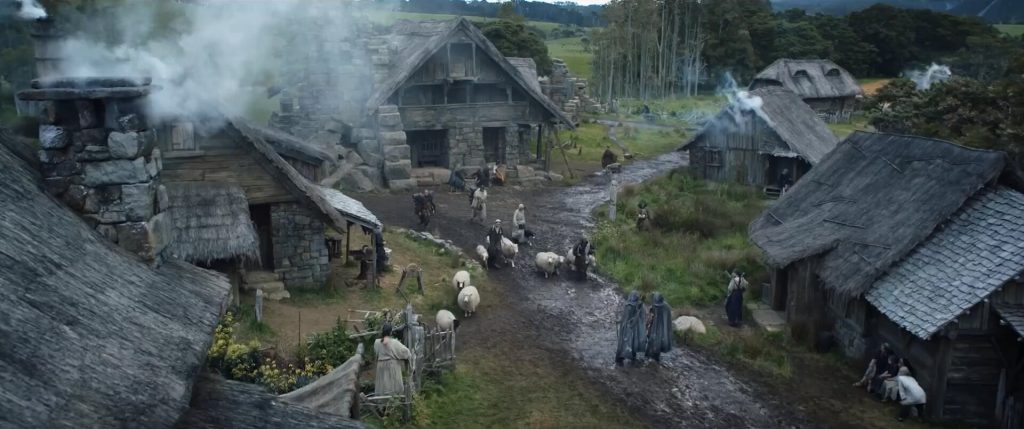
The issue with this concept as inspiration for an environment is that a lot of the feeling created form the piece is made using the characters shown. From the two adventurers in blue cloaks to the villages going about their daily chores; and this is not something that would be present in my environment as I am not going to be creating characters to place in my environment. I worry that a lot of the vividness of the scene would be lost without the characters and would result in a fairly bland environment.
:: Example 4 ::
With this piece, ‘Castle Gate’, by Anish Tufchi a very simple environment in terms of modelling is still able to create a visually stunning scene. While a concept piece I feel an environment like this would translate well to a 3D environment and would allow me to experiment with material creation for things such as snow as well as learning tools such as quick tree for the forestry areas and marvellous designer for things like cloth banners and perhaps abandoned carriages.
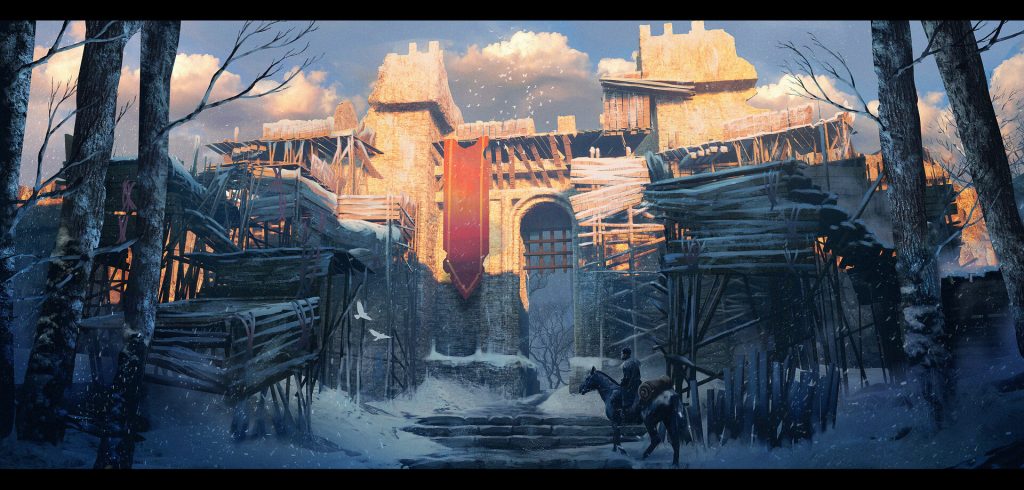
I think going down the route of a damaged castle could make for a strong environment. Allowing for a simple scene that I can thoroughly research and methodically produce to create a stunning final render.
The downsides I see with this environment choice however is by having to learn new software’s I might not be able to produce a result of a quality I am happy with as I may not have time to really polish my output when working toward a strict deadline. I would also need to be experiment a lot with blocking out the scene in order to produce a compelling asset list and nail down my final vision.
:: My Environment Decision ::
I want to create a modern campsite set around the ancient ruins of a castle gate. This would be an exterior environment, which would be fun to make as I have not attempted an external scene previously. Also by making the scene a place where people lived this environment would allow me to tell a personal story and fill the environment with character.
I will be able to implement LOD with larger assets such as the castle wall and gate itself. As well as with certain hero assets like the sunken cart. I’d be able to experiment with my PBR materials, creating realistic looking rock surfaces for things like paths and castle walls as well as creating cloth for tarpaulins and sleeping bags.
This environment also allows for experimentation using Substance Painter to create things like snow materials which can fall naturally onto the environment; or a dirt texture with puddles that can be manipulated within game engine. Plus, I can use VFX within unreal engine to create things like a lit camp fire, with embers rising from the pit.
:: Summary ::
With this post I have discussed what I hope to improve on from my previous environment, as well as exploring various environment Ideas from junior environment artists in the industry. Giving me a baseline for the quality I need to create with my final environment piece. Finally, I decided on an environment idea which I will further pursue with 2D sketches as well as a 3D Blockout. Which will eventually put me in a position to begin on the production of my environment.
:: References ::
Dominguez, P (2022). ‘Rings of Power,Tirharad’ [Digital Artwork]. Available online: https://www.artstation.com/artwork/JeK3Qz [Accessed 30/09/2022]
Jordan, J. (2021). ‘How to Design Better Video Game Environment Art’ [Online Article] Available online: https://narrasoft.com/game-environment-design/ [Accessed 30/09/02022]
Smissen, S (A) (2021). ‘Lost And Found’ [Digital Artwork]. Available online: https://www.artstation.com/artwork/9mLk4q [Accessed 30/09/2022]
Smissen, S (B) (2021). ‘Detective’s Attic’ [Digital Artwork]. Available online: https://www.artstation.com/artwork/w6d4K9 [Accessed 30/09/2022]